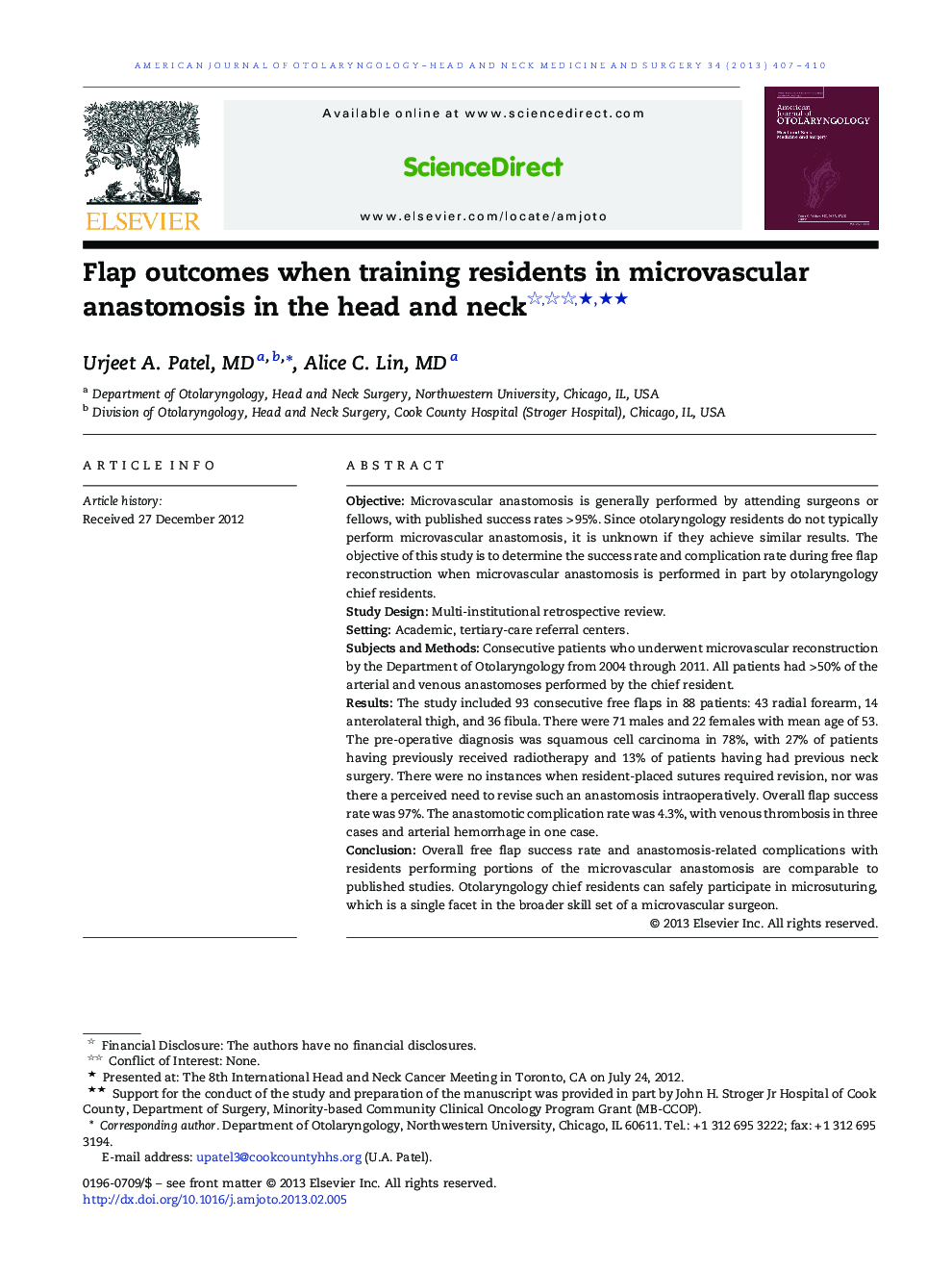| Article ID | Journal | Published Year | Pages | File Type |
|---|---|---|---|---|
| 4103129 | American Journal of Otolaryngology | 2013 | 4 Pages |
ObjectiveMicrovascular anastomosis is generally performed by attending surgeons or fellows, with published success rates > 95%. Since otolaryngology residents do not typically perform microvascular anastomosis, it is unknown if they achieve similar results. The objective of this study is to determine the success rate and complication rate during free flap reconstruction when microvascular anastomosis is performed in part by otolaryngology chief residents.Study DesignMulti-institutional retrospective review.SettingAcademic, tertiary-care referral centers.Subjects and MethodsConsecutive patients who underwent microvascular reconstruction by the Department of Otolaryngology from 2004 through 2011. All patients had > 50% of the arterial and venous anastomoses performed by the chief resident.ResultsThe study included 93 consecutive free flaps in 88 patients: 43 radial forearm, 14 anterolateral thigh, and 36 fibula. There were 71 males and 22 females with mean age of 53. The pre-operative diagnosis was squamous cell carcinoma in 78%, with 27% of patients having previously received radiotherapy and 13% of patients having had previous neck surgery. There were no instances when resident-placed sutures required revision, nor was there a perceived need to revise such an anastomosis intraoperatively. Overall flap success rate was 97%. The anastomotic complication rate was 4.3%, with venous thrombosis in three cases and arterial hemorrhage in one case.ConclusionOverall free flap success rate and anastomosis-related complications with residents performing portions of the microvascular anastomosis are comparable to published studies. Otolaryngology chief residents can safely participate in microsuturing, which is a single facet in the broader skill set of a microvascular surgeon.
